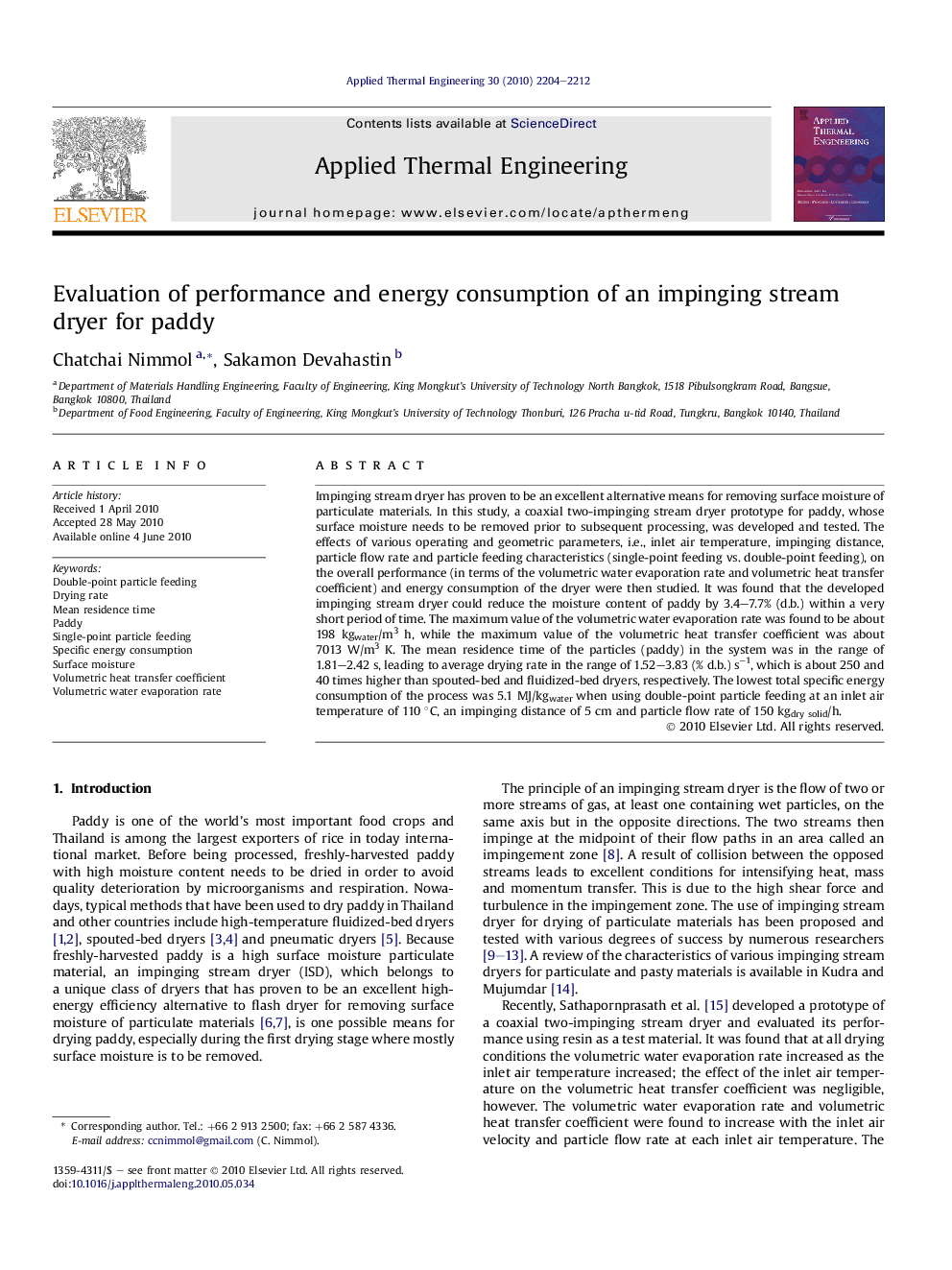| Article ID | Journal | Published Year | Pages | File Type |
|---|---|---|---|---|
| 648235 | Applied Thermal Engineering | 2010 | 9 Pages |
Impinging stream dryer has proven to be an excellent alternative means for removing surface moisture of particulate materials. In this study, a coaxial two-impinging stream dryer prototype for paddy, whose surface moisture needs to be removed prior to subsequent processing, was developed and tested. The effects of various operating and geometric parameters, i.e., inlet air temperature, impinging distance, particle flow rate and particle feeding characteristics (single-point feeding vs. double-point feeding), on the overall performance (in terms of the volumetric water evaporation rate and volumetric heat transfer coefficient) and energy consumption of the dryer were then studied. It was found that the developed impinging stream dryer could reduce the moisture content of paddy by 3.4–7.7% (d.b.) within a very short period of time. The maximum value of the volumetric water evaporation rate was found to be about 198 kgwater/m3 h, while the maximum value of the volumetric heat transfer coefficient was about 7013 W/m3 K. The mean residence time of the particles (paddy) in the system was in the range of 1.81–2.42 s, leading to average drying rate in the range of 1.52–3.83 (% d.b.) s−1, which is about 250 and 40 times higher than spouted-bed and fluidized-bed dryers, respectively. The lowest total specific energy consumption of the process was 5.1 MJ/kgwater when using double-point particle feeding at an inlet air temperature of 110 °C, an impinging distance of 5 cm and particle flow rate of 150 kgdry solid/h.
